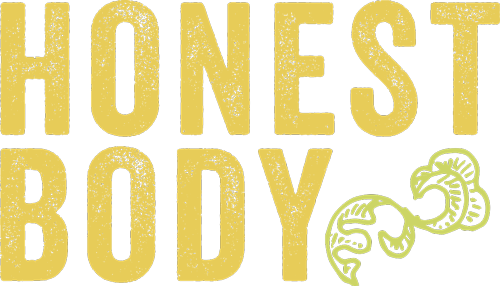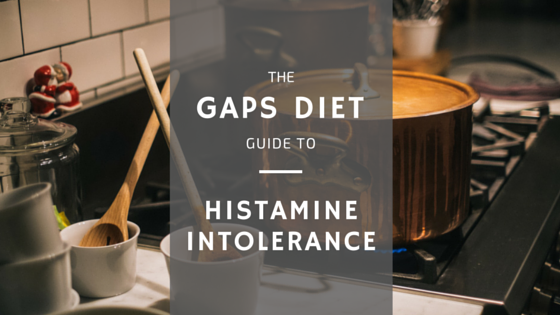How to do the GAPS Diet with Histamine Intolerance
In this article I’m going to outline information about the complexities of histamine intolerance and explain how to do the GAPS Diet with Histamine Intolerance.
Histamine is involved with many physiological processes and histamine intolerance is a common issue with my clients.
Today, I write about where to start if you are doing the intestinal healing protocol, GAPS, and also dealing with histamine intolerance.
The GAPS™ Protocol is a digestive healing protocol that does wonders for nourishing and helping the body, helping many families and individuals regain their health even when conventional medicine has failed to help them do so. The range of conditions GAPS™ can help address includes:
Autism, eczema, headaches & migraines, digestive issues (such as acid reflux, diarrhea, constipation, gas & bloating), autoimmune disorders, fussy eating, acne, FPIES, poor immunity, candida, failure to thrive, OCD, aggressive behavior, anxiety, night terrors, dis-regulated hormones, etc., etc…
However, for those with histamine intolerance, trying to do GAPS can be a troublesome issue. Many of the very foods that are used to heal and nourish on the GAPS Protocol are high in histamines.
However, the GAPS Protocol can be the very solution for balancing the gut microbiome and the histamine issue in the long run. It is possible that the ill health of the gut may even turn the vulnerable genes “on” that contribute to histamine issues. For instance, the DAO enzyme system is located in the intestinal mucosa.
This article will help you figure out how to do the GAPS diet with histamine intolerance.
How does one get past the histamine intolerance symptoms? Let’s start with a brief summary of what histamine intolerance is, as well as symptoms, and what causes histamine levels to build up.
What is histamine?
Histamine is one of those chemicals that performs multiple jobs. It’s a bio-active chemical (useful and natural within the body), a neurotransmitter (messenger between cells), and a mediator in inflammatory & allergic responses. It regulates access to the blood capillaries; also regulating stomach acid, muscle contractions, & even brain function. It defends against pathogenic viruses, bacteria, etc. In other words, we need it!
“Normal” blood levels are 0.3 – 1.0 ng/mL, but individual tolerance is variable. So too, are the causes of one person’s intolerance compared to another.
Symptoms of histamine excess
Sourced from Dr. Janice Joneja’s 2010 paper:
- Pruritus (itching especially of the skin, eyes, ears, and nose)
- Urticaria (hives)
- Tissue swelling (angioedema) especially of facial and oral tissues and sometimes the throat, the latter causing the feeling of “throat tightening”
- Hypotension (drop in blood pressure)
- Tachycardia (increased pulse rate, “heart racing”)
- Symptoms resembling anxiety or panic attack
- Chest pain
- Nasal congestion and runny nose
- Conjunctivitis (irritated, watery, reddened eyes)
- Some types of headaches that differ from those of migraine
- Fatigue, confusion, irritability
- Very occasionally loss of consciousness usually lasting for only one or two seconds
- Digestive tract upset, especially heartburn, “indigestion”, and reflux
Where does histamine come from?
#1 – Food
All proteins contain the amino acid histidine. Through microbial action, the histidine in protein is converted to histamine. So all foods that are fermented during their production contain histamine and even foods that are not fermented will have more histamine if they are not fresh, such as leftovers. Histamine levels can also be high in certain non-fermented foods like oranges, spinach & cinnamon. The biggest culprits on the GAPS Protocol would be bone broth, fermented foods, cultured dairy & nuts. Leftover meat can also be an issue as batch cooking is a helpful tool for GAPS.
High histamine foods:
- Fermented foods (with the exception of properly fermented anaerobic ferments like those done in a Pickl-It)
- Cow’s milk and most cultured dairy (such as cheeses, kefir, yogurt, sour cream, buttermilk…there can be exceptions)
- Shellfish (due to histamine producing bacteria remaining in the gut of shellfish)
- Fish (unless immediately gutted and very fresh)
- Leftover meat
- Processed meat (smoked, cured, or fermented like bacon & salami)
- Dried fruits
- Citrus fruits
- Spinach
- Tomato products (red tomatoes are higher histamine than yellow/orange)
- Vinegar products (vinegar, pickles, ketchup, mustard)
- Artificial colors
- Artificial preservatives
- Nuts
- Chocolate
- Coffee beans (that are fermented)
- Alcohol
- Long cooked bone broth
- Wheat germ
- Strawberries
- Pineapple
- Papaya
- Tea (black, green, & mate)
- Some spices (cinnamon, cloves, chili powder, anise, nutmeg, curry powder, cayenne)
Your own food sensitivities:
- In my one-to-one client work, we do the MRT-170 Food Sensitivity test (mediator response test) because each individual can have foods that produce an inflammatory response via mediators like histamine. Therefore you can have your own unique “high-histamine” foods.
#2 – Immune cell production (basophils, eosinophils, mast cells)
An important component of the immune response, histamine is released by immune cells (below) in order to open up the capillaries for white blood cells to get in and do their work against pathogens or toxins.
- Mast cells
- Basophils
- Eosinophils
A great way to lower your histamine response is to work with a practitioner who uses the LEAP MRT-170 food sensitivity testing to eliminate foods that are causing a histamine response while healing the gut with GAPS. This is something I do with clients, which you can find out more about through my My Services page.
#3 – Low levels of one/both of these two (2) enzymes
These two enzymes, especially DAO, bind & break down histamine, preventing excess histamine.
- DAO – diamine oxidase
- HMT – histamine N-methyltransferase
#3 – Gut bacteria
- Many of the bacteria that live in the gut, particularly the colon, produce histidine decarboxylase, which is the enzyme that’s capable of converting histidine, which is an amino acid and protein, into histamine
- Histamine-producing bacteria: Lactobacillus casei, Lactobacillus delbrueckii, Lactobacillus bulgaricus, Lactobacillus reuteri, and Lactococcus lactis, Enterococcus faecalis, and various types of E. coli
- Histamine-degrading bacteria: Lots of bifidobacteria species, but particularly Bifidobacterium infantis, Lactobacillus Plantarum, and then Lactobacillus rhamnosus, and salivarius, and sporogenes, and Lactobacillus gasseri.
(See my probiotic recommendations below)
If you have problems metabolizing and breaking down histamine then the histamine levels build up and give you symptoms.
How to fit GAPS to histamine intolerance
All is not lost in fitting GAPS with histamine intolerance. Start with these important steps to fit histamine intolerance into your GAPS plan.
- **IMPORTANT** – Only consume short cooked “meat stock”, rather than long cooked bone broth, for at least 30 days. Bone broth that is cooked long and slow, will have much higher levels of histamine. See this article for the difference – Honest Body GAPS Diet Bone Broth vs. Meat Stock
- Ferment your sauerkraut with true anaerobic fermentation, in vessels like The Probiotic Jar jars. Start with a two (2) week fermentation with a good soil based bacteria starter like Caldwell’s. If you are extra sensitive, move your ferment to the fridge for another 2 – 3 months before consuming.
- Consider reducing your bio-individual histamine producing foods via MRT-170 Food Sensitivity testing, which is testing I do with my one-to-one clients.
- Do regular coffee enemas (See Dr. Natasha Campbell McBride’s FAQ on this, see first item under “Enema”)
- Fresh pressed juices (include some raw beet which is naturally anti-histamine)
- Take histamine-reducing or histamine-neutral probiotics (list below)
- If you need to, take a break. Remove all high histamine foods for 30+ days and slowly re-introduce the GAPS healing foods that can be problematic with histamine intolerance.
Probiotics for histamine intolerance
All of these probiotics either contain histamine reducing or histamine neutral strains.
- Researched Nutritionals Multi-Biome
- Smidge Probiotic Powder (Formerly GutPro)
- Peak Biotics
- Pro-Biota 12

Other histamine resources:
#1 – Supplements that support DAO, the enzyme that breaks down histamine:
#2 – Natural anti-histamines or helper supplements:
- HistaminX (by Seeking Health)
- Histoplex-AB (by Biotics Research, doesn’t contain DAO specifically but contains immunomodulating properties for fewer reactions. Please contact me to set up an account with Biotics Research)
- Apex Energetics Histo-X
- Quercitin + Bioflavanoids
- Vitamin C
- Holy Basil
- Magnesium glycinate
#3 – Homeopathic Isopathic Phenolic Rings
- by Energetix (30 drops 2x per day)
A note on fresh food according to Ayurvedic tradition
“The body’s inability to metabolize foods that are not fresh results in the formation of ama, or toxic undigested material,” adds Shubhra Krishan, author of Essential Ayurveda: What It Is and What It Can Do for You. This substance clogs up the vital channels of the body, disrupting digestion and ultimately giving rise to everything from fatigue to disease. Since food begins losing prana the moment it’s disconnected from its life source, it is important to create meals using only the freshest ingredients and to take care not to overcook them. Try not to cook meals ahead of time; if possible, make a few separate trips during the week to buy fresh produce.
Yoga Journal
Conclusion:
The GAPS™ Protocol is a nourishing and effective diet, detoxification, supplement, & lifestyle program. It is also adaptable to your individual needs…its foundation is good, whole food! With a little tweaking, even those with histamine intolerance can gain many benefits from GAPS.
Sources:
- http://omicsonline.org/histamine-degradation-by-diamine-oxidase-lactobacillus-and-vergibacillus-halodonitrificans-nai18-2157-7110.1000158.pdf
- http://www.yogajournal.com/article/balance/lifeless-leftovers/
- http://www.judytsafrirmd.com/histamine-intolerance-gaps-and-low-carb/
- http://www.allergynutrition.com/wp-content/uploads/2014/05/Histamine-DAO-and-Probiotics-Revised.pdf
- http://www.histamineintolerance.org.uk/about/the-food-diary/the-food-list
- http://ajcn.nutrition.org/content/85/5/1185/T3.expansion.html
- http://ajcn.nutrition.org/content/85/5/1185.long
- https://www.bulletproofexec.com/why-yogurt-and-probiotics-make-you-fat-and-foggy/
- http://chriskresser.com/headaches-hives-and-heartburn-could-histamine-be-the-cause
[/et_pb_text][/et_pb_column][/et_pb_row][et_pb_row _builder_version=”3.25″ background_size=”initial” background_position=”top_left” background_repeat=”repeat”][et_pb_column type=”4_4″ _builder_version=”3.25″ custom_padding=”|||” custom_padding__hover=”|||”][et_pb_button button_url=”https://honestbody.com/gaps-class” url_new_window=”on” button_text=”Interested in a 9-Week GAPS Class to learn more? Click here.” button_alignment=”center” admin_label=”GAPS Class Button” _builder_version=”3.16″ custom_button=”on” button_bg_color=”#f35339″ button_border_color=”#f35339″ background_layout=”dark” button_text_size__hover_enabled=”off” button_one_text_size__hover_enabled=”off” button_two_text_size__hover_enabled=”off” button_text_color__hover_enabled=”off” button_one_text_color__hover_enabled=”off” button_two_text_color__hover_enabled=”off” button_border_width__hover_enabled=”off” button_one_border_width__hover_enabled=”off” button_two_border_width__hover_enabled=”off” button_border_color__hover_enabled=”off” button_one_border_color__hover_enabled=”off” button_two_border_color__hover_enabled=”off” button_border_radius__hover_enabled=”off” button_one_border_radius__hover_enabled=”off” button_two_border_radius__hover_enabled=”off” button_letter_spacing__hover_enabled=”off” button_one_letter_spacing__hover_enabled=”off” button_two_letter_spacing__hover_enabled=”off” button_bg_color__hover_enabled=”off” button_one_bg_color__hover_enabled=”off” button_two_bg_color__hover_enabled=”off”]
[/et_pb_button][/et_pb_column][/et_pb_row][/et_pb_section]


7 thoughts on “How To Do The GAPS Diet With Histamine Intolerance”
Thank you so much for posting such a great and concise article. This has definitely been my challenge…your post helps me a lot!
Thank you for posting, Tina! I’m so glad you found it helpful.
Warmly,
Melanie
Thank you so much for this post! I am researching the probiotics you listed to see if any of them are chewable or in a form my 3 year old would take (like a powder I could mix into something??). From my research they all look like capsules. Do you have any advice for this? Currently he is taking Yum Yum Dophilus chewables.
Hi Sarah,
Thanks for the question. I would suggest opening up the probiotic capsules and mixing the powder in not-too-hot food…that can be an easy way to get probiotics into littles. 🙂
Kindly,
Melanie
Thank you so much for this article ! I struggled with the GAPS diet then i discovered it’s because of the histamine intolerance i have. I’m in french and i need to figure out where i can find and buy the probiotics that are suitable for me but again thank you so much this was very helpful !
Great Information, thank you!
Unfortunately, a lot of the links don’t lead anywhere anymore!!
Janice
Hi Janice!
Thank you so much for bringing the much needed updates to our attention. We have corrected the links in the article.
Hopefully they will be helpful for you!
Warmly,
Deanna, HB Assistant and Certified GAPS Coach